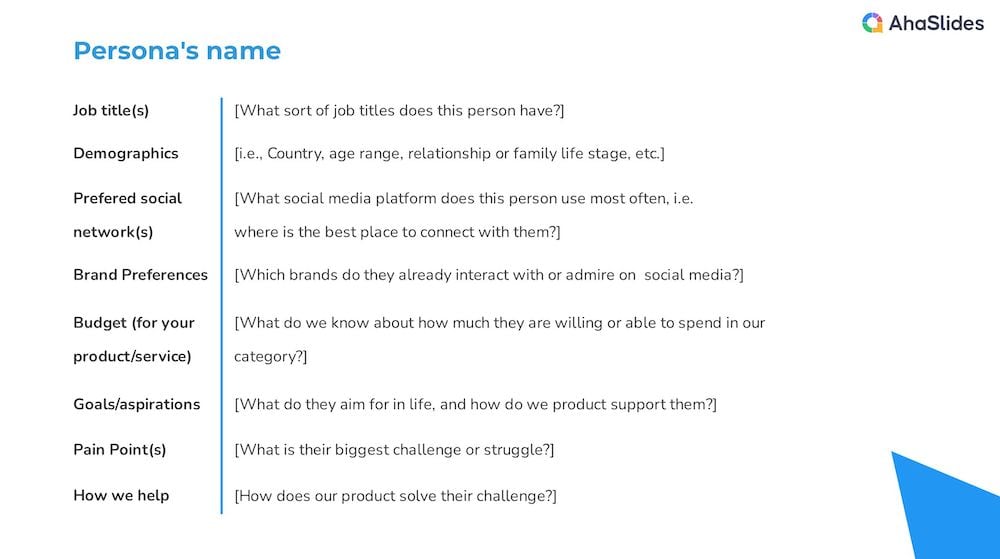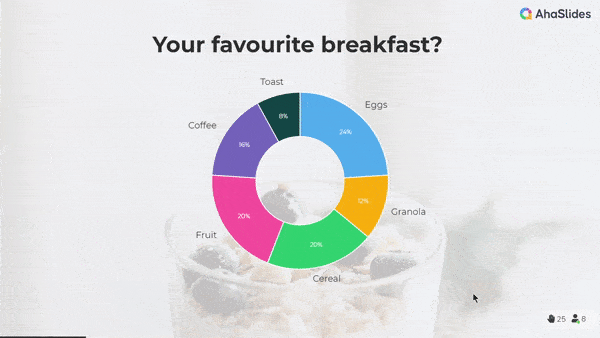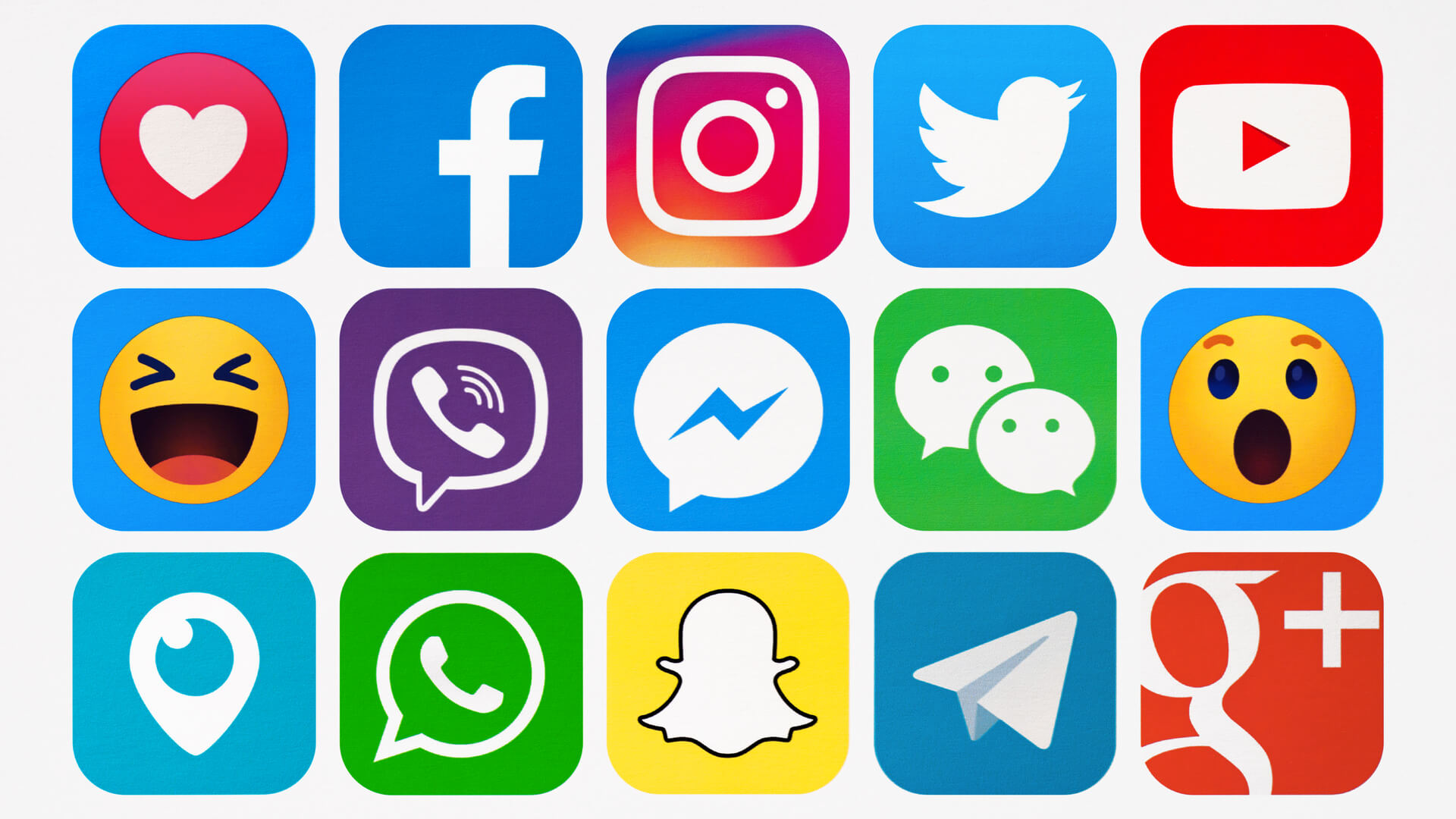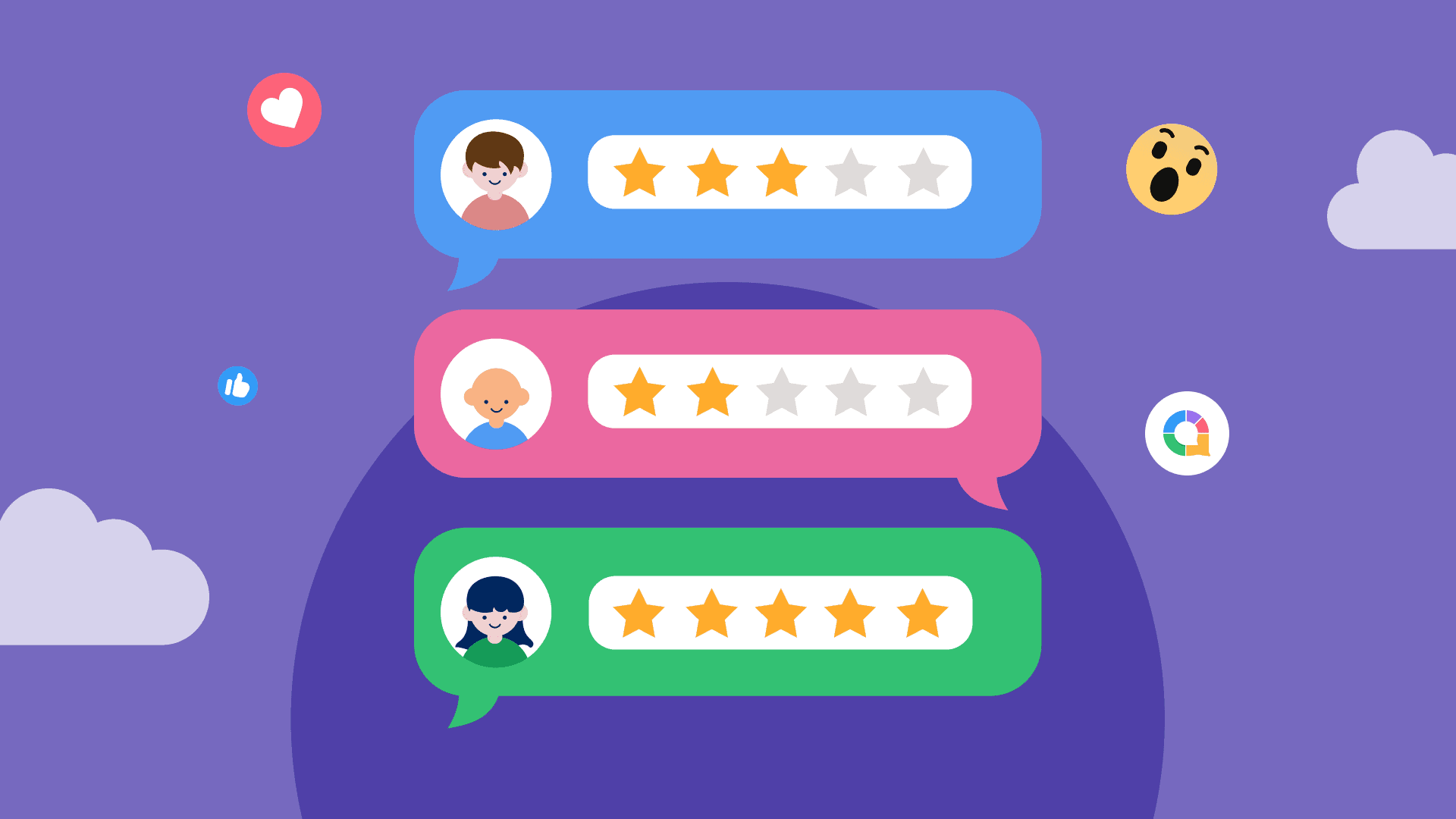Does the thought of creating a social media plan make you want to bolt the door and hide?🚪🏃♀️
You're not alone.
With new technology orbiting social media platforms day by day - Twitter changes its algorithms (and its name to X!), TikTok's new content policy, X's cool foe on the block (Instagram's Threads) - the madness never ends!
But hold on just a minute - your success doesn't have to depend on chasing every new flashy network that launches. With our compact social media strategy templates and guide, no more panicking every time there's an Instagram update!

Table of Contents
- What is a Social Media Strategy?
- How to Write a Social Media Strategy
- Free Social Media Strategy Templates
- Key Takeaways
- Frequently Asked Questions

Looking for More Fun During Gatherings?
Gather your team members by a fun quiz on AhaSlides. Sign up to take free quiz from AhaSlides template library!
🚀 Grab Free Quiz☁️
What is a Social Media Strategy?
A social media strategy is a plan documenting how your business/organisation will elevate social media platforms to aid your overall marketing and business goals.
It often comprises your social media goals, target audience, brand guidelines, platforms used, content plan, content calendar, and how you measure your strategy effectiveness.
How to Write a Social Media Strategy
#1. Set the social media strategy goal

Social media is the brand’s voice and it's closely integrated with other marketing efforts to grow your business.
To craft an effective strategy, you should align social media goals with the brand’s business goals.
Here are the most common goals for social media marketing:

Remember that not one-size-fits-all, whatever you choose, it must be SMART and stay relevant and specific to your brand.
Here are some examples of SMART goals that could be used for a social media content strategy:
Specific:
- Increase Instagram story views by 10% over the next quarter.
- Generate 50 clicks to our website from LinkedIn posts per month.
Measurable:
- Gain 150 new Facebook followers within 6 months.
- Achieve an average engagement rate of 5% on Twitter.
Achievable:
- Double YouTube subscribers from 500 to 1,000 by this time next year.
- Boost our organic reach on Facebook by 25% monthly.
Relevant:
- Generate 5 qualified sales leads per month from LinkedIn.
- Increase brand awareness with millennials on TikTok by 15% in 6 months.
Time-Bound:
- Reach 500 consistent views per Instagram Reel within 3 months.
- Improve click-through rate on Facebook ads to 2% by the end of Q2.
#2.Know your audience

Before getting started, let's do a small reflection on yourself first:
- What brands do you follow on social media and why?
- What kind of content do you look for from these brands?
- What brands have you unfollowed on social media and why?
People use social media for different purposes. It can be to get informed, entertained, connected or inspired. Ask the same question about your audience.
Who are you trying to reach? What are their ages, genders, occupations, incomes, aspirations, and pain points and how your brand can help them solve their challenge?
Creating your target persona profile using a mind mapping tool will help you see the picture clearer and map out each finding to a corresponding and suitable strategy.
Mine the Audience's Opinion through AhaSlides Survey
Ask your target customers what they want from you - Get results that speak.

#3. Conduct a social media audit

One of the most important parts of strategising your socials is research, research, and research - meaning go stalk your own social media channels and your competitors'.
First up, do a deep dive into your own accounts. Look at each platform and take notes - what’s working well? What could use improvement? What are your hypotheses? This self-audit helps point out strengths to build on and weaknesses to shore up.
Next, it’s time to stealthily stalk your rivals! Check out their profiles, follow counts, types of content, and posts that popped up.
Use social media listening tools like Buzzsumo, FanpageKarma, or BrandWatch.
Some questions to consider: What tactics are generating engagement for them? Which platforms seem neglected where you could swoop in? What content flops so you know what not to try?
#4. Select social media platforms

You don't need to be present on all the platforms, but selecting a few that your target audience is active on is the winning strategy.
Evaluate the strengths and weaknesses of different platforms for your business goals. For example, Instagram is great for visual content but not so much for longer written content, Tiktok has an e-commerce section which can be great if you're selling online.
Consider platforms your competitors are using successfully as well as untapped opportunities you can exploit.
Test new platforms before fully committing resources. Run a limited trial to gain experience.
Factor practical constraints like staffing/budget needs when selecting platforms you have the bandwidth to properly manage.
Re-evaluate platform selections annually as audiences and networks evolve. Be willing to drop ones no longer relevant.
#5. Create your content plan
Now you've done your research properly, now is the time to get into action.
Identify the types of content you'll create:
- Where does it fall in the customer's journey? For example, if it's for awareness, education or thought-leadership content will be the best fit.

Which type of content will you post?
- Visuals (authentic)
- Videos:
- How-to, Q&A, slideshow, spotlight, product/unboxing, before and afters, live-streaming (for example: AMA — ask me anything), and such
- “Stories”
- Holidays/special events
- Brand core values
- Emotional content
- Curated content
- User-generated content: customer photos, reviews and testimonials (example: #challenges)
- Quizzes, surveys and polls

Include a combination of posts aimed at acquiring new followers vs. engaging existing ones.
Map out content in advance for 6-12 months to stay consistent during busy times, but also test new formats, hashtags and captions regularly to keep things fresh.
Allow flexibility to repurpose top-performing posts or pivot based on trends/feedback.
#6. Make a content calendar

Determine your posting frequency for each network - for example, 2x per week on Facebook, 3x on Instagram.
Block out content topics, themes or types you want to cover for each planned post.
Note any relevant dates like holidays, cultural events or industry conferences coming up.
Schedule launch dates/times for major promotions, campaigns or new product launches.
Build in buffer posts like shares, user-generated content or conversational topics.
Highlight any recurring series like #TastyTuesday recipes or #MotivationMonday quotes.
Consider cross-promoting relevant content across networks for increased reach.
Leave room in the schedule for reactive, real-time or repurposed posts as needed.
Share the calendar with your team to stay on track, and iteratively improve it over time.
💡 You can use social media scheduling apps like Hootsuite, SproutSocial, Google Sheets or AirTable.
#7. Determine your analytics and metrics

Define your KPIs (key performance indicators) based on your goals - follower count, engagement rate, click-throughs, leads, and such.
Track both vanity metrics that show reach and behavioural metrics that show performance.
Choose the specific analytics you'll monitor for each platform, such as likes, shares, and comments for Facebook.
Set benchmarks and targets you want to achieve over time for each metric.
Monitor metrics at both the post and platform levels to identify top-performing types of content.
Consider tools like Google Analytics, Fanpage Karma or social media analytic section to track KPIs across networks.
Analyse trends over time to see what strategies and campaigns are working best.
Adjust strategy based on data to continuously optimise engagement and results and track referral traffic sources to measure how social is driving users to your site.
#8. Allocate resources & budgets

Determine your overall budget and how much can be dedicated to social initiatives.
Budget for paid promotion tools like ads, boosted posts, sponsored influencer content. Track Return-On-Investment (ROI).
Some common ways to calculate social media ROI:
- Cost per lead (CPL) - Total spent on social media marketing/Number of leads generated
Helps calculate customer acquisition cost. - Cost per click (CPC) - Total spend/Number of clicks to your website from social channels
Shows efficiency of clicks from ad spend. - Engagement rate - Total engagements (likes, shares, comments)/Total number of followers or impressions
Measures level of interaction on posted content. - Lead conversion rate - Number of leads/Number of visits to your website from social media

Allocate tools to automate tasks, schedule posts, and analyse results like Sprout Social, Brand24 or Hootsuite.
Account for staffing needs, such as how many hours per week team members can focus on social tasks.
Include costs for user-generated content prizes or incentives if running campaigns.
Budget for graphic design work if you need to create a lot of custom images and videos.
Estimate costs for user acquisition, monitoring and engagement tools.
Allow for a testing budget to try new ad formats, platforms or sponsored content if you can.
Re-evaluate budget benchmarks quarterly based on evolving priorities and performance.
Free Social Media Strategy Templates
Don't know where to start? No problem! Get ahead of the game with our basic and advanced social media strategy templates below👇
Key Takeaways
We hope these lessons have left you feeling excited, motivated and brimming with ideas to level up your presence.
Practice makes perfect. Keep things consistent and always open to new ideas, your audience will find your brand organically in no time.
Frequently Asked Questions
What are the 5 C's of social media strategy?
The 5 C's of a social media strategy are:
Content
Creating and sharing valuable, engaging content is at the core of any social media strategy. The content plan should outline the types, formats, cadence and topics of posts you will share.
Community
Fostering community is about interacting and engaging with your target audience. Responding to comments, asking questions, and acknowledging users are ways to build relationships.
Consistency
Posting regularly across networks helps followers rely on you as an authoritative source. It also increases the chances of people seeing your updates.
Collaboration
Partnering with influencers and businesses with similar audiences can introduce your brand to new people. Collaborating boosts credibility.
Conversion
All social efforts should ultimately be geared towards a desired goal like leads, sales or website traffic. Tracking metrics helps optimize the strategy and content to drive better results.
What are 3 social media marketing strategies?
Three common social media marketing strategies you should focus on are:
Content marketing: Creating and sharing engaging, educational content is a core social media strategy. This helps raise your brand's authority and builds relationships with potential customers.
Paid social advertising: Using paid promotion through ad platforms like Facebook/Instagram Ads allows you to significantly boost the reach of your content and campaigns.
Community building: Fostering engagement and two-way interactions is another effective strategy. This involves regularly posting/replying to foster discussions.











